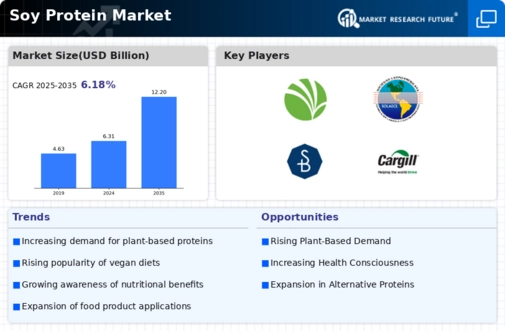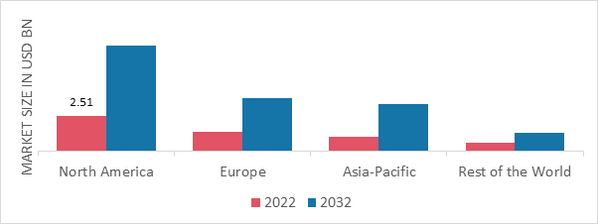Market Share
Soy Protein Market Share Analysis
The soy protein market is influenced by a variety of factors that shape its growth, trends, and overall dynamics. Soy protein is derived from soybeans and is widely used in various industries, including food and beverage, pharmaceuticals, and cosmetics, due to its nutritional benefits and functional properties. One of the primary drivers of this market is the increasing demand for plant-based protein alternatives. With growing concerns about health, sustainability, and animal welfare, consumers are seeking plant-derived protein sources as alternatives to animal-based proteins. Soy protein, being a complete protein rich in essential amino acids, is increasingly favored by health-conscious consumers looking for meat substitutes, dairy alternatives, and protein-enriched food products.
Moreover, changing dietary patterns and lifestyle trends are also significant drivers impacting the market dynamics. As more consumers adopt vegetarian, vegan, or flexitarian diets, there is a growing demand for plant-based protein ingredients like soy protein. This shift towards plant-based diets is driven by various factors, including concerns about environmental sustainability, animal welfare, and personal health. Soy protein offers a versatile and nutritious protein source that can be incorporated into a wide range of food products, including meat analogs, dairy alternatives, baked goods, and nutritional supplements, catering to diverse dietary preferences and driving market growth.
Another key factor influencing the market dynamics is the increasing awareness of the health benefits associated with soy protein consumption. Soy protein has been linked to various health benefits, including heart health, weight management, bone health, and hormonal balance. As a result, consumers are actively seeking out products fortified with soy protein or labeled as containing soy protein isolate or concentrate. Manufacturers are responding to this demand by introducing new soy protein-based products and promoting their health benefits through marketing campaigns and product labeling, thus driving market growth and penetration.
Furthermore, technological advancements and innovation play a crucial role in shaping the competitive landscape of the soy protein market. Advances in extraction, purification, and processing techniques have enabled manufacturers to improve the quality, functionality, and sensory attributes of soy protein ingredients. This has led to the development of a wide range of soy protein products, including isolates, concentrates, textured proteins, and hydrolysates, with enhanced solubility, digestibility, and flavor profiles. Additionally, innovations in product formulation and application have expanded the use of soy protein in various food and beverage applications, contributing to market growth and diversification.
However, market dynamics also present challenges that need to be addressed for sustained growth. One such challenge is the growing competition from alternative plant-based protein sources. As consumer interest in plant-based diets continues to rise, manufacturers are introducing new protein ingredients derived from sources such as pea, rice, hemp, and algae, offering alternatives to soy protein. Additionally, concerns about allergenicity, genetically modified organisms (GMOs), and anti-nutritional factors associated with soy protein may pose barriers to market entry and consumer acceptance in certain regions and market segments.
Moreover, regulatory considerations and quality standards pose another set of challenges for market players. Soy protein manufacturers must comply with stringent regulations governing food safety, labeling, and quality assurance to ensure consumer safety and meet regulatory requirements in different markets. Additionally, certification requirements such as non-GMO, organic, and kosher certifications may vary by region and market, requiring manufacturers to invest in compliance measures and certification processes to access certain market segments and meet consumer preferences.








Leave a Comment